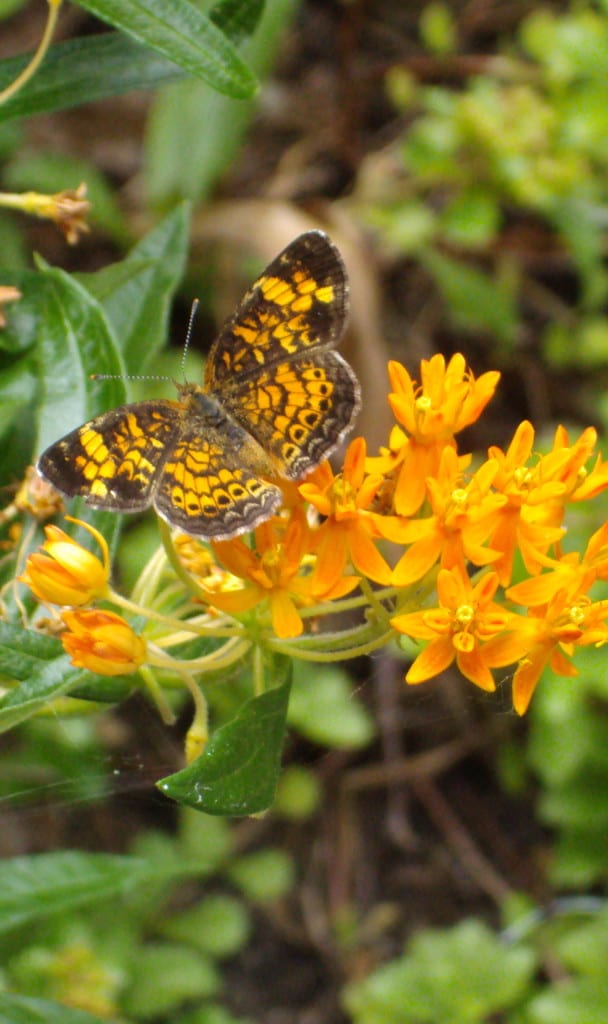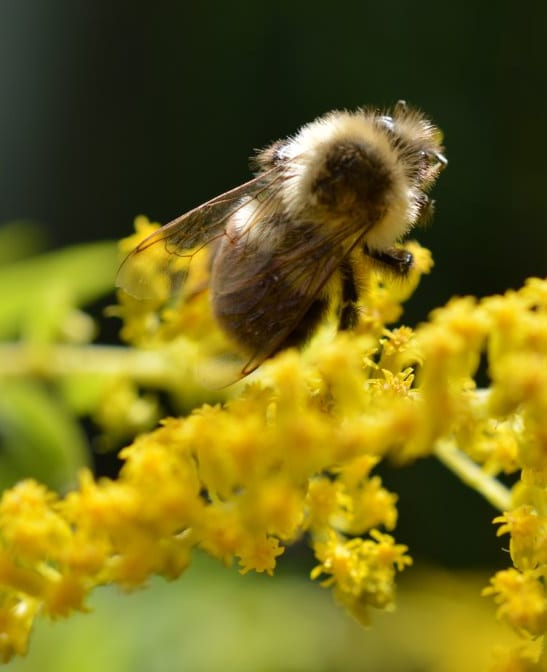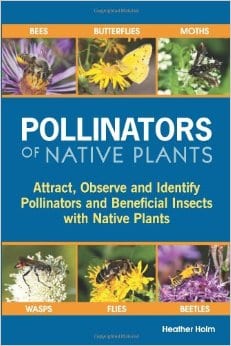 Attract, Observe and Identify Pollinators and Beneficial Insects with Native Plants
Attract, Observe and Identify Pollinators and Beneficial Insects with Native Plants
Written by Heather Holm
Published by Pollination Press LLC, Minnetonka, MN, 2014
Reviewed by Bruce Wenning
Heather Holm is an experienced native plant landscape designer and restorationist. Her well-written book includes over 1600 color photographs and drawings that encapsulates her devotion to native plant conservation and the associated insects that pollinate these plants. Holm has successfully combined her photography talent with scholarly research to produce this unique, fact-based text covering the myriad of haphazard, quick flying insects that pollinate the native plants of the prairie, woodland edge, and wetland edge. She covers the Northeast and southern Canada, Midwest and Great Lakes region of the United States.
The book has a field guide style that effectively profiles, with close up color photographs and accompanying written descriptions, the pollinating insects that visit specific native plants. Her presentation takes the guesswork out of insect field identification. Once you know the plant, you can view the many insects using that plant in the landscape, and all on the same page! The pollinating insects are all there in color. Holm’s idea for this book is solely based on her many years of careful observation and record keeping of pollinating insects of the native plants she has experience with.
 I am a trained entomologist and have been taught to capture, kill, and identify the insect in question by using a laboratory microscope and specific taxonomic keys. This is usually the biologist’s way of identifying and cataloging insects for proper reporting or for research.
I am a trained entomologist and have been taught to capture, kill, and identify the insect in question by using a laboratory microscope and specific taxonomic keys. This is usually the biologist’s way of identifying and cataloging insects for proper reporting or for research.
Holm has taken that laborious task away from the laboratory and focused it in her accurate photographs with accompanying text. Her natural history style presentation takes the reader to a quick and less taxonomic process for insect identification. Again, once you know the plant, you can identify with a high degree of certainty the pollinating insects.
Chapter 1 covers the natural process of insect pollination of various flower shapes, sizes and colors as they relate to the actual acts of pollination, plant reproduction and sustainability. Holm stresses that without insect pollinators, the majority of native plants would cease to exist. Native plant sustainability is dependent on successful pollination. Other topics include flower development, the importance of pollen and nectar, floral characteristics that attract insects, and how some pollinating insects are specialists and most are generalists. She also gives a short treatment to other insects that visit flowers such as predators, parasitoids, hyperparasitoids, and cleptoparasites.
Chapter 2 focuses on solitary and communal bees, their similarities and differences. Bee behaviors are clearly defined and described for semi-social, subsocial, and eusocial bee groups. The differences between these groups, including hive division of labor, foraging patterns, and the importance of their respective habitat requirements is strongly emphasized.
Chapter 3 effectively covers the broad subject of pollinator conservation. Topics include proper horticultural and conservation practices that conserve these important insects in the native landscape. The chapter also addresses threats to pollinators that, if ignored, will result in insect deaths and/or repel these insects and destroy their habitats.
Pulling this chapter together is a Pollinator Conservation Checklist that helps the garden designer review the beneficial actions versus the destructive actions for pollinator conservation. Special focus is on nesting habitat, foraging resources, plant selection and placement, and pesticide poisoning. Holm’s review will help the landscape designer make better decisions about ecologically designed garden projects. The end of this chapter describes how to use the remaining portion of the book to identify specific native plants and associated pollinators.
 Chapters 4 (Prairie), 5(Woodland edge), and 6 (Wetland edge) are the pollinator plant summaries for each plant in their respective chapter habitats. These chapters serve the reader as a quick natural history field guide reference which is concise and easy to read. Plant flowering period, habitat, range, height, flower morphological information, specific notes on each plant, and the insects attracted to it are synoptically profiled.
Chapters 4 (Prairie), 5(Woodland edge), and 6 (Wetland edge) are the pollinator plant summaries for each plant in their respective chapter habitats. These chapters serve the reader as a quick natural history field guide reference which is concise and easy to read. Plant flowering period, habitat, range, height, flower morphological information, specific notes on each plant, and the insects attracted to it are synoptically profiled.
The last sections of the book are put together for quick review of what is presented in the body of the text: (1) charts that summarize bee and predatory wasp interactions with the plants Holm describes and charts that list the flowering times of all native plants described in the book; (2) a glossary; (3) a visual or illustrated glossary of plant leaves, roots, fruits, and flower parts as well as bee anatomy, nests, and pollination; (4) a color photo guide summary of bee genera biological characteristics that is cross referenced to the original entries; (5) sample native plant garden design plans specific for various sites and for some pollinators profiled in the book; (6) a visual index of bees, wasps, butterflies, moths, flies, and beetles, including other insects and spiders associated with native plants; and (7) a complete index.
This book is a must for garden designers, entomologists, botanists, ecological restorationists, and others who are interested in this aspect of ecological science. It is a beautifully written and illustrated book on a timely but complex subject.
About the Reviewer
Bruce Wenning is the horticulturist at The Country Club, Brookline, MA. He has degrees in plant pathology and entomology. Also, he has managed volunteers for invasive plant projects for over 15 years. When he worked at Mass Audubon, Habitat Sanctuary, Belmont, MA he developed and coordinated the Save Our Sanctuary (S.O.S.) Invasive Exotic Plant Management Volunteer Group. From 1998 to 2006 the Habitat sanctuary grounds department recruited and worked with approximately 110 volunteers and removed close to 9,000 buckthorn plants covering about 25 plus acres.


